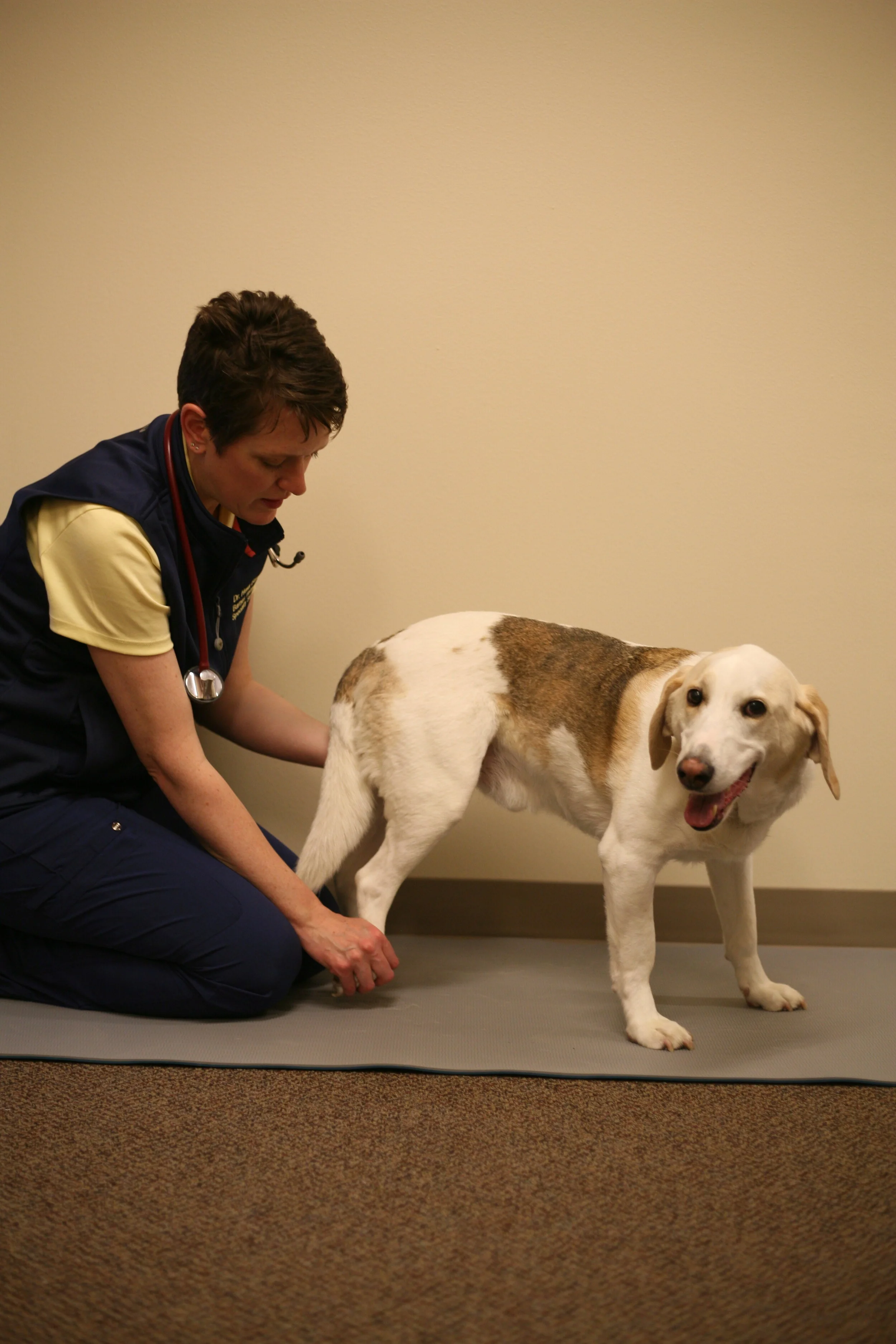What is Degenerative Myelopathy?
Much more than a descriptive term, Degenerative Myelopathy (DM), is an actual disease unto itself with links to human Amyotrophic Lateral Sclerosis (ALS).
Presenting clinical signs: pelvic limb weakness, ataxia, and paw replacement deficits
Onset: Slow, progressive
Pain: Non-painful
Typical signalment: German Shepherd, Corgi, Boxer, Rhodesian Ridgeback most common, but other breeds possible. Typically middle aged (7+ years old) without sex predilection
Lesion localization: T3-L3 myelopathy initially, but degeneration will progress caudally causing loss of pelvic limb reflexes (in order...what is the order?) and cranially resulting in an ascending cutaneous trunci reflex and eventually loss of thoracic limb reflexes with paresis. If left to progress long enough brainstem involvement can occur.
Diagnostic testing: 1) rule out all other causes of a T3-L3 myelopathy. These breeds are prone to IVDH type II and neoplasia both of which are slowly progressive variably painful causes of myelopathy (spinal cord disease). 2) A DNA test can be performed at several locations.I have used the Orthopedic foundation (https://www.ofa.org/diseases/dna-tested-diseases/dm) or UC Davis (https://www.vgl.ucdavis.edu/services/dog/DegenerativeMyelopathy.php) for testing.
Interpretation of Results:
1) Not at risk: this means the dog does not have the SOD1 mutation. This mutation has been associated with the development of DM
2) Carrier: One copy of the SOD1 mutation was identified. There is a low chance of development of DM in this individual but a 50% chance of passing along one copy of the mutation should breeding occur.
3) At risk: Two copies of the SOD1 mutation have been found. This individual is at risk of developing DM.
**Remember that a small subset of dogs can develop DM without the SOD1 mutation so necropsy is still the gold standard for a definitive diagnosis.
How do I use the DNA test?
This was a point of contention with my residents because I do not believe this test should be used in exclusion of MRI or CSF tap. I use the DM test to determine if a patient is at risk but I STILL recommend ruling out IVDH and neoplasia before I conclude that a patient actually has clinical signs attributed to DM.
The DNA test tells us if the dog carries one or two copies of a mutation that may or may not result in neurologic disease at some time in the dogs life. It does not tell us if the dog's current clinical signs are related to DM.
Case in Point: An 8 year old MC Boxer presents with a 2 month history of slowly progressive difficulty walking in the pelvic limbs. On examination you localize the problem to the T3-L3 segment without evidence of spinal pain. Your differentials include: DM, neoplasia, meningomyelitis and IVDH. You do the DNA test and the dog is "at risk". What do you do?
Option 1: Treat the dog for DM including exercise restrictions, physical rehabilitation and planning for supportive measures. No true treatment for the disease exists.
Option 2: You send them for MRI and CSF tap and a extramedullary spinal cord compression is found at T12-T13 consistent with a disc rupture. What do you do? Should the owner do surgery or not?
In my opinion, the owner is only able to make the best decision for their pet when provided ALL of the available information. This includes doing a DNA test AND doing the MRI/CSF tap. After putting all of these pieces together we can choose a best course of action.
If we do the MRI/CSF tap first and no disease is identified do we need to do the DNA test (if not planning on breeding)?
If the DNA test shows the patient is not at risk, does it change the fact that signs are consistent with DM and the dog has no evidence of compression or inflammatory disease? We would still treat for presumptive DM so how does the DNA test change this?
Food for thought during this season of consumption!

